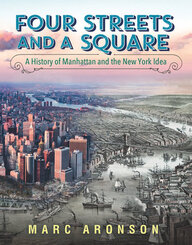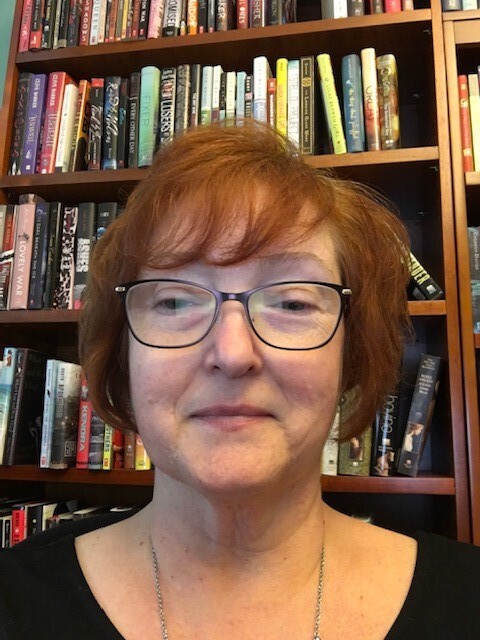Teachers would benefit from mining YA nonfiction for its potential to catalyze engaging and meaningful, researched writing in public history. Books like Aronson’s (2021), Four Streets and a Square: A History of Manhattan and the New York Idea, catalyze such work as they provide a methodological model of the social history of space, in that place markers can be read as complicated sites of conflict and (re)invention. Moreover, nonfiction texts like Four Streets and a Square have the capability to position young people as historians and authors of a new variety of digitally researched writing, as well as arbiters of what these histories of place mean.
Overview and Method
Place always signified something important for me. Growing up in Detroit, I felt ever conscious of places or representational spaces that served as portals of meaning to understand the city at large, like Belle Isle and the Belle Isle Aquarium with its polished brass rails, vitreous, green ceiling tile, cool, dank passageways, and the still silence of the giant gars. City planners intended Belle Isle as a respite and natural encounter, a sanctuary in contrast to the toils of the workweek. Moreover, historians indicate that traces of Frederick Law Olmstead’s vision are imprinted on the design of the park (Detroit Historical Society, 2022).
We might recognize Olmstead’s name as the landscape architect of Central Park, and generalize some of the same forces at work in the creation of that green space as so many others in the nation, in that public parks allegorized social tensions concerning wealth and access made comprehensible through the opposition between those who had always enjoyed the pleasures of a private garden, and others whom city planners believed would benefit from the pedagogy of parks toward cultivating an aesthetic disposition of appreciation (Aronson, 2021, pp. 133-135).
The story of Central Park is one of many that Aronson (2021) relates in Four Streets and a Square, a vibrantly ambitious social history of Manhattan, which also represents a method of research and composition. More specifically, Aronson enables public space to become comprehensible through the location of central tensions that reveal competing identities, social arrangements, and values, and from this conflicted set of encounters emerges a complex portrait of the city. For example, Four Streets and a Square reminds us that the verdant space of contemplative pleasure, Central Park, emerged from the forced removal of “Black and German communities” who made their home in Seneca Village, the park site prior to 1853 (Aronson, 2021, p. 133).
In this rendering of New York cityscape, the reader tracks the emergence of cultural institutions and landmarks, affinities and oppositions, through a succession of clashes: Indigenous dwellers and Dutch traders, immigrants and nativists, reformers and challengers—up to present day disputes between longstanding residents and investment firms.
However, what I have shared thus far only accounts for half of the compositional method. For the material book, Four Streets and a Square, is doubled by a parallel text or digital catalog of thematically related, multimodal sources that enhance and expand the reading experience. Meaning, the reader is cued by signs embedded in the print text to shift to the digital companion. In this way, the reader embarks on a hypertext journey that enables the city—in all its contradiction and fullness—to sensorially materialize.
For example, the hypertext companion reader (accessible here) is introduced by Tito Puente’s, “110th Street and 5th Avenue,” which initiates readers to the coming catalog: digital texts from historical archives (e.g., Knickerbocker’s History of New York ); wiki (e.g., the Welikia: Beyond Mannahatta, a curated encounter with pre-colonial nature); interactive maps of landmarks reflective of specific social and cultural histories (e.g. Mapping the African American Past and resources from the Cornell library on labor and working class studies); archival photos and illustrations; Smithsonian links to online resources; academic articles and lectures (e.g., Wynton Marsalis’ discussion on the history of minstrelsy); musical selections and reaction videos (e.g., opera, swing, klezmer, folk, and New York Salsa); records on public emergencies and disasters (e.g., the New York Draft Riots of 1863 and burning of the Orphan Asylum); virtual museum tours (e.g., the New York Transit Museum); podcasts (e.g., an episode of NPR’s Code Switch on the history of the “cakewalk”); video and audio recordings of key performances (e.g., samples of Ragtime, Jazz, show tunes, gospel, and rock); constellations of resources on special topics (e.g., the History of Harlem, musical theater, etc.); film clips and historic shorts (e.g., Pennebaker’s Daybreak Express), paintings (e.g., Jacob Lawrence’s Migration Series), and numerous politically and socially resonant conversations (e.g., some topics include Malcolm X, Nina Simone, Lorraine Hansberry, and the Stonewall Project).
All these resources enable—and ultimately model—an evocative journey into place through an initiation to arts, architecture, history, politics, and socio-cultural relationships.
Activity
It would be easy to get overwhelmed by the sheer amount of place-specific detail in the book. However, if the reader keeps certain organizing concepts in view (e.g., political/ideological conflicts, shifting economic and social relationships, cultural-artistic watersheds, and semiotic decoding of public space), then a compositional blueprint emerges as to how the project might be adapted and applied to any space on any scale the reader might choose, contingent on a person’s individual locale.
For example, a student could select a site (e.g., city, building, landmark, monument, natural space, etc.) that would open a window onto public history discoverable by research. And, in the process of that research, specific tensions would emerge as to the location’s divergent meaning or value for varied stakeholders across time, which the student would then interpret and evaluate through commentary.
Students might consider places like 1) formerly restricted areas (e.g., neighborhoods, schools, or social sites), 2) contested places that had a specific meaning for community members at one time and then newcomers proposed other meanings, perhaps with a change in ownership (e.g., stadiums, businesses, factories, or neighborhoods), or 3) monuments and landmarks that act as cartographies of complicated social relationships over time.
But that is not all. Based on the wealth of digital resources I mentioned above, a faithful mirroring of Aronson’s (2021) project would also have to render the subject digitally through an eclectic assemblage of multimodal sources that would present the space in all its paradox for readers to consider. This could occur through curation of a companion constellation of resources outside of the text, akin to Aronson’s (2021) method, or it could happen through the composition of a digital document with embedded hyperlinks.
Text Connections
The scholar and writer, Will Self (2012), composed a multimodal essay titled, “Kafka’s Wound: A Digital Literary Essay,” that incorporated a rich array of resources like we see in Aronson, toward offering a non-linear, oneiric rumination on Franz Kafka’s Prague to contextualize the short story, “A Country Doctor.” Although the document is no longer available on the internet, the essay demonstrated an impressive level of technical skill, artistic ingenuity, and research authority, inaugurated by an animated, weeping willow-like graphic organizer that appeared as a header and device for loosely arranging the hyperlinked materials. This kind of digital composition is texturally reflective of the 21st Century writing forms advocated by numerous scholars of composition pedagogy.
Additionally, although nonfiction social histories of place in YAL are a rarity, there was an Alex Award-winning text by Stephen G. Bloom (2010) titled, The Oxford Project, which took a different approach to presenting a diachronic vision of place. This remarkable book contrasted the photos of residents of Oxford, Iowa across a gulf of 20 years, and offered ethnographic description of place through changes in the portraits and interviews with subjects. This book reads like the nonfiction, multimodal complement to Anderson’s (1919/1992) Winesburg, Ohio.
Additional Resources
I recommend the following resources for the teacher interested in designing a unit on writing about place.
Augé, M. (2008). Non-places: An introduction to supermodernity (J. Howe, Trans.). Verso.
Bachelard, G. (1994). The poetics of space (J.R. Stilgoe, Trans.). Beacon Press.
Cresswell, T. (2004). Place: A short introduction. Blackwell.
Lefebvre, H. (1992). The production of space (D. Nicholson-Smith, Trans.). Wiley-Blackwell.
Massey, D. & Jess, P. (Eds.). (1996). A Place in the world? Places, cultures, and globalization. Oxford University Press.
Mathieu, P., Grattan, G., Lindgren, T., & Shultz, S. (2013). Writing places (2nd ed.). Pearson.
References
Anderson, S. (1992). Winesburg, Ohio. Penguin.
Aronson, M. (2021). Four streets and a square: A history of Manhattan and the New York idea. Candlewick Press.
Bloom, S.G. (2010). The Oxford project (P. Feldstein, Photog.). Welcome books.
Detroit Historical Society. (2022). Belle Isle Park. Encyclopedia of Detroit. https://detroithistorical.org/learn/encyclopedia-of-detroit/belle-isle-park
Self, W. (2012, August 9). Kafka’s wound: A digital literary essay. The Space [digital arts service].
Stacy Graber is an Associate Professor and Program Coordinator of English Education at Youngstown State University. Her areas of interest include critical theory, pedagogy, young adult literature, and popular culture.





 RSS Feed
RSS Feed